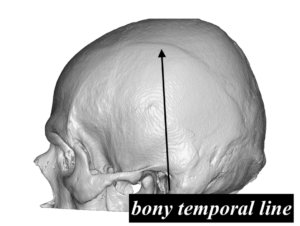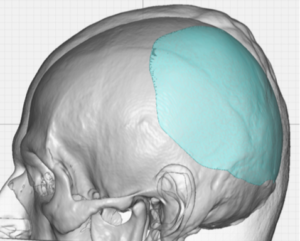Custom skull implants are most commonly performed for flat areas of the back of the head. For flat spots in the back of the head the most common etiology is plagiocephaly, a unilateral or one-sided flat area on the back of the head. While plagiocephaly causes deformations of the entire shape of the skull (cranioscoliosis) the flat area on the back of the head is usually of greatest concern to most patients. (as opposed to the forehead protrusion or the more anterior position of the ear on the flat side)


As a result on the flatter side there is going to be considerable more swelling that extends onto the anterior temporal region as well as the eye area. There may even be some bruising as well that works its way into the eyelids. This is perfectly normal and expected given the difference in the dissection between the two sides of the posterior temporal region.
Dr. Barry Eppley
World-Renowned Plastic Surgeon



